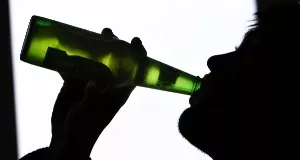A new report which the Alcohol Beverage Federation of Ireland (ABFI) have said shows the prevalence of weekly alcohol consumption by adolescents in Ireland fell by 8.6 per cent between 2002 and 2014, from 12.7 per cent to 4.1 per cent has been warmly welcomed.
According to the ABFI the World Health Organisation (WHO) rate of alcohol consumption by adolescents in Ireland in 2014 (4.1 per cent) was well below the average in the European region (12.9 per cent).
The WHO report, entitled "Adolescent alcohol-related behaviours: trends and inequalities in the WHO European Region, 2002–2014”, found that Ireland ranked 34th out of the 36 countries and regions examined in terms of the prevalence of weekly drinking by adolescents. It noted that the prevalence of weekly drinking among girls and boys is one of the lowest in the European region, at 2 per cent and 5 per cent respectively.

The report also found that:
- Ireland ranked 30th out of 36 countries and regions in terms of the prevalence of drunkenness in 2014, well below the average in the European region.
- There was a sharp fall in the number of adolescents in Ireland who said they had been drunk two or more times in their lifetime, from 32.1 per cent in 2002 to 16.2 per cent in 2014
- Ireland ranked 30th of 36 countries or regions in terms of the prevalence of early alcohol initiation (first time to consume alcohol) and early drunkenness among girls in 2014
- Ireland ranked 31st of 36 countries or regions in terms of the prevalence of early alcohol initiation (first time to consume alcohol) and early drunkenness among boys in 2014
Patricia Callan, Director of Alcohol Beverage Federation (ABFI) said the repirt was welcome because it showed that important progress has been made since 2002, with a sharp decline in drinking among adolescents in Ireland.
“There are a number of reasons for this decline. For example, in Ireland, we adhere to some of the strictest advertising codes in the world for both content and volume of alcohol advertising and we are committed to maintaining those high standards. These codes have existed since 2003 and mean that no alcohol advertising can appeal directly to young people or feature anyone who is, or appears to be, under the age of 25.
“Going forward, there are a number of initiatives being put in place to further tackle the exposure of young people to alcohol. For example, recently a new initiative has been launched which sees leading beer, wine, and spirits producers joining forces with prominent digital platforms (Facebook, Snapchat, Twitter and YouTube) to set and deliver new and robust standards for marketing alcohol online.
“We want to work with Government and stakeholders to further reduce the level of consumption by young people.
“In terms of legislation, we support the objectives of the Alcohol Bill, which aims to reduce harmful drinking and underage drinking. But we need targeted and evidence-based measures to do this, which is currently not the case with a number of proposals, particularly cancer warning labels.”
- Digital Desk






